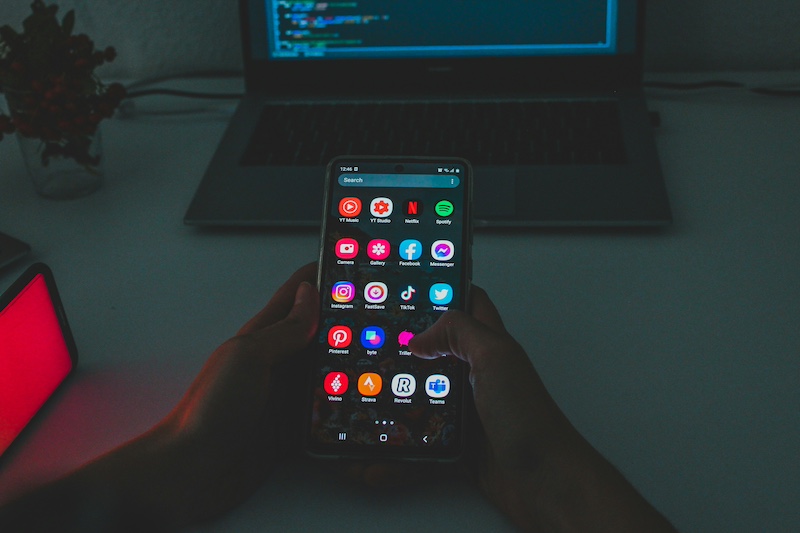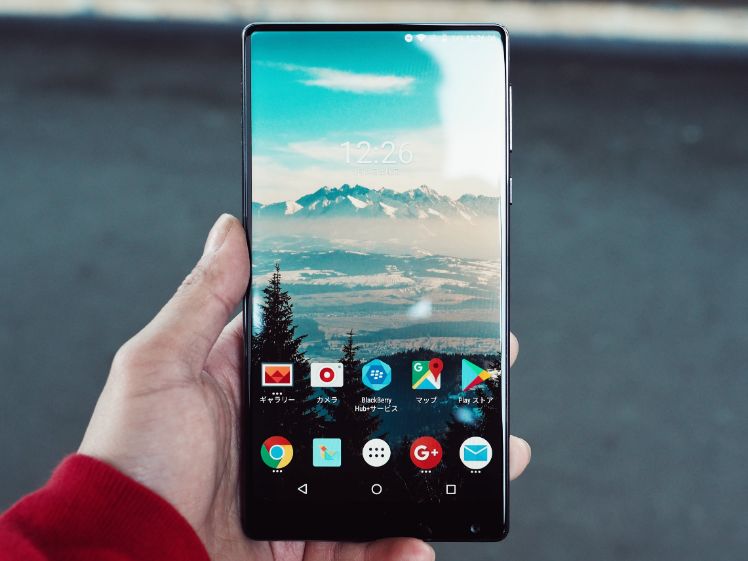In the digital era, mobile applications are fundamental to engaging a tech-savvy audience. Understanding how much does it cost to create an app is crucial for businesses seeking to innovate and appeal to the mobile-first consumer. Whether you’re a budding entrepreneur or an established business, app creation costs can dictate your roadmap. This comprehensive guide aims to unpack the complexities behind the costs and provide you with a clearer perspective.
Before building an App
As mentioned earlier, the cost for developing applications is a common question, especially for those who have never been through the process of developing one. For example, one of our most popular articles is about the cost of developing an app like Pokemon Go. If available I guess you could ask someone who has had experience in the development process for some guidance. You can say your experience among other factors will illustrate how much you really know about mobile applications.
What Influences App Development Costs?
In this section, we´ll cover the most important factors affecting cost for mobile app development:
- App Complexity and Features: Simple apps with basic functionality are relatively inexpensive, but costs escalate with more sophisticated features like real-time tracking, e-commerce capabilities, or complex calculations. For instance, developing a high-caliber game like Pokemon Go necessitates a substantial investment due to advanced graphics and interactivity.
- Development Method: The platforms chosen for app deployment (iOS, Android, or cross-platform) directly impact costs. Native applications are costlier, whereas hybrid or web apps represent more budget-friendly options. Moreover, the specific devices targeted, such as various iPhone models with distinct functionalities, add to the cost considerations.
- Location and Structure of the Development Team: Costs can vary dramatically worldwide, with development teams in different regions charging disparate rates. Additionally, the team’s expertise, reputation, and size can also influence the budget.
- Maintenance and Marketing: Post-launch updates, ongoing maintenance, and promotional activities are sometimes overlooked but are pivotal cost components. A successful app requires continuous upkeep and strategic marketing investments to thrive in a competitive marketplace.
Choosing the Right Platform and Technology: A Critical Cost Factor
One of the pivotal decisions that significantly influence the answer to “How much does it cost to make an app?” is the choice of platform and technology. This choice is not just about the immediate cost of development — it’s a strategic decision that affects your app’s accessibility, user experience, and scope for future growth.
iOS vs. Android: The Cost Dynamics
The first fork in the road of app development is choosing between the two tech giants: iOS and Android. While the ideal scenario is to launch your app on both platforms to capture the entire market, financial constraints often make it necessary to choose one to start with.
Developing for iOS generally requires a more considerable initial investment. The coding language, Swift, and the need to comply with Apple’s stringent App Store guidelines necessitate precise, often more expensive, development. However, iOS apps often see higher in-app purchases and revenue rates, which can justify the initial costs.
On the other hand, Android offers a more fragmented ecosystem due to the wide variety of devices using the OS. This diversity requires additional testing and adaptation to ensure the app runs smoothly on all devices, which can add to the costs. However, Android’s more lenient submission policies and wider market penetration, especially in developing countries, are factors that can’t be ignored.
Hybrid vs. Native Apps: Balancing Cost and Performance
The debate doesn’t end at choosing an operating system. You must also decide on the technology stack — specifically, whether to build a native app or a hybrid one.
Native apps are designed for a specific platform, leveraging the device’s hardware and ecosystem to ensure the best performance. They provide a superior user experience, aligning with the platform’s UI/UX standards, and allow full access to device capabilities. However, these perks come at a cost — you’ll need a separate app version for each platform, doubling development costs, and timelines.
In contrast, hybrid apps are the “build once, run anywhere” solution. These apps use standard web technologies and are contained within a native application. While they’re faster and more economical to develop, they may compromise on performance, user experience, and access to device features. However, with advancements in technologies like React Native or Flutter, hybrid apps are closing the performance gap, making them a cost-effective option for startups and small businesses.
Emerging Technologies and Costs Implications
App development isn’t immune to the fast-paced evolution of technology. Emerging trends like Internet of Things (IoT), Augmented Reality (AR), Virtual Reality (VR), Artificial Intelligence (AI), and blockchain are reshaping the app landscape.
Integrating these advanced technologies means your app will provide cutting-edge features and a futuristic user experience. However, these advancements require specialized skills and more development time, significantly bumping up your costs. For example, an AR-powered retail app or an AI-enabled personal finance app will cost substantially more than a standard e-commerce or budgeting app.
The Hidden App Development Costs
Beyond the immediate app development process, several hidden costs can emerge. Post-development expenses, often overlooked, are integral to your budget planning.
Maintenance and updates represent ongoing costs. Regular updates, fixing bugs, or enhancing security measures are aspects of keeping your app competitive and functional.
Moreover, marketing your app is a significant expenditure. Establishing visibility in the crowded marketplace, promoting user downloads, and maintaining engagement rates are vital for your app’s success. These marketing and promotional undertakings demand a substantial allocation of resources.
Also, if your app stores or processes personal data, compliance with legal standards and data protection laws is mandatory, potentially adding another cost layer.
Real-world Examples and Case Studies
So, how much does it cost to make magic happen in the app world? For this example, let´s focus on Uber and Instagram. They’re not just apps; they’re practically a lifestyle, and getting them from a cool idea to the icons on your phone screen is a journey filled with hard cash and big dreams.
Riding with Uber’s Wallet
Imagine starting with a simple app that hooks you up with a ride. Sounds basic, right? Well, even this ‘basic’ setup could have you digging deep, forking out anywhere from $70,000 to $150,000. That’s just for starters, like an MVP (Minimum Viable Product). But Uber didn’t just stop there. They went big, taking on the world, one city at a time. They had to think about all the extra cool stuff: real-time ride tracking, cashless payments, and a ton of regulations (because laws). We’re talking about an ongoing money party where millions keep the app running, expanding, and evolving.
Instagram: More Than Just Pretty Pictures
Now, onto Instagram. It’s not just about snapping your food anymore; it’s big business, influencers, ads, and more. The starting point here isn’t cheap. With all the techy stuff like photo uploading, filters, and social sharing, the initial price tag could be a sweet $100,000 to $300,000. And as Instagram grew up, it started wanting more — stories, live videos, shopping features. Each new feature means more cha-ching: development costs, server spaces, and keeping everything running smoothly.
How much does it cost to create an app?- The figures
If you want to have an idea about how much does it cost to develop an app:
- Between 1,500 and 5000 euros for a simple application, the type of app that fall under this category might be designed for a specific company carrying out a campaign. These types of application do not take long to develop.
- Mobile apps between 5,000 and 35,000 euros includes databases whether it is installed on the devise or on an external source such as APIs or web services.
- Between 2,000 and 35,000 euros you can find specific hardware-based applications, for instance photographic applications.
- 5,000 and 100,000 euros for tailored made application, which is designed to tackle a particular issue.
- Between 7,500 and 100,000 euros for game apps. Applications designed for gameplay are seen as the most expensive application to develop due to the high performance and graphic quality of mobile phones. A good example of this would be Angry Birds as they paid more than 100,000 euros to develop the game.
To dismiss any doubts and to configure the closest possible way to calculate what does it cost to develop a mobile application; contact Yeeply, we recommend you post your project on our free platform today and see for yourself how easy it is to contact developers to suit your needs.
On the other hand if you feel you need an estimation of how much your application will cost, why not use our free budget calculator to get the average price to make an app; by answering a few simple question you will be given an estimate which is close to the real market.
FAQs
1. How much does it really cost to develop an app in 2023?
Well, that’s a bit like asking, “How long is a piece of string?” It depends! A simple app with basic features can start from around $10,000, but if you’re aiming for the stars with high-end, complex features, you might be looking at costs upward of $300,000. Remember, the devil’s in the details — more features, higher costs!
2. Are we talking about the same costs for every platform?
Not quite! Developing for iOS might not cost the same as for Android. It all boils down to the specific requirements of each platform and the differences in coding. Sometimes, going universal (think cross-platform) can save a bit, but expecting a separate budget for each is usually a good idea.
3. Does the development phase encompass all costs involved?
If only it were that simple! Development is a big chunk, for sure. But don’t forget about the “after-party” — maintenance, updates, marketing, and all that jazz. Some say a safe bet is to multiply your development costs by 1.5 to cover the first year of these extras.
4. Can I cut corners with a pre-made app template?
You betcha! Templates or app builders can slash costs down, sometimes to even less than $5,000. But there’s a catch – customization will be limited, and if you dream of a standout app, this might not be the route for you.
5. Why are some apps way pricier to develop than others?
It’s all about the complexity and the tech involved. An app that pulls off augmented reality, real-time analytics, or custom animations is like a high-maintenance Hollywood star — it demands a bigger budget. More coding, more testing, more everything!
6. Is there a way to ballpark my app development costs?
Absolutely! You’ve got a few options: you can consult us, or use the free cost calculators.
7. How often will I need to invest in updates or maintenance?
Welcome to the never-ending saga! Apps are living things — they need regular check-ups and TLC. Depending on the app’s nature, you might be looking at updates every few months, especially if you want to keep up with system updates and new tech on the block.









